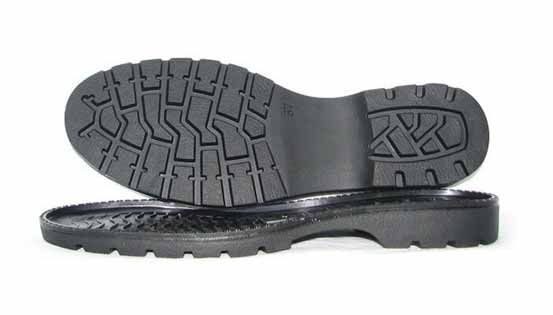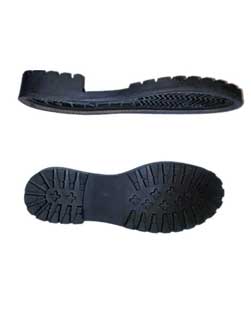It is a known fact as we go on doing our daily work, it is
our feet which usually takes the major pressure of the work. While we are
walking, standing or sitting, the weight of your body lands on our feet.
That is why it is sensible to invest in a pair of good quality shoes.
However it is very essential to maintain and take care of our shoes so that
it lasts for a long time. One common way to make a pair of shoes more
durable is to put a sole on the footwear. There are various materials used
for making shoe soles. But the most popular ones are leather and rubber.
Among the two, the rubber soles in footwear are more advantageous .
Why Rubber Soles are Better?
The main advantage of wearing leather-soled shoes is that they are more
comfortable when worn in the summer. Some prefer the “soundâ€
that is made by leather soles shoes and heels when walking indoors.
Moreover, leather soles and leather footwear allow your feet to breathe. But
then a pair of rubber soles shoes are multi-weather shoes, that is , the
rubber sole footwear is suitable for all seasons. When you are walking on a
wet pavement or on snow-covered streets, you should definitely wear shoes
with rubber soles as they provide better traction on wet surfaces. The
chance of slipping also gets reduced. Moreover, rubber sole shoes are an
economical and practical choice for footwear


Types of
Rubber Soles
Not all rubber soles are same. Not all rubber can be used for making soles.
Depending on the brand and type of shoes that you are wearing, the various
types of rubber soles that are used are as follows:
- Resin Rubber: This type of sole is waterproof and also hard-wearing. However, it tends to feel a bit hard when you are walking on hard surface.
- Crepe Rubber: Crepe rubber is considered as the most versatile types of sole for footwear as it is light, flexible and hard-wearing.
- Gristle Rubber: This rubber sole is mostly used in industrial footwear. It is robust in quality.
- PVC: Soles made of PVC is is flexible and cheap but can be slippery. At times , cracks also occur.
- Ployurethane: This offers a good resistance to slipping. It is light and hard wearing.
- Anti Vibration Mountings
- Automobile Rubber Products
- Calendered Rubber Products
- Extruded Rubber Products
- Medical Rubber Products
- Metal Bonded Components
- Rubber Adhesives & Sealants
- Rubber Ball
- Rubber Bands
- Rubber Beading
- Rubber Bearing
- Rubber Belt
- Rubber Buckets
- Rubber Bullets
- Rubber Cable
- Rubber Coating
- Rubber Duct
- Rubber Expansion Joints
- Rubber Flooring/Matting
- Rubber Footwear
- Rubber Gloves
- Rubber Injection Parts
- Rubber Lining
- Rubber Magnets
- Rubber Molded Products
- Rubber Pads
- Rubber Rollers
- Rubber Stopper
- Rubber Suit
- Rubber Track
- Rubber Valve
- Rubber Balloon
- Rubber Stamps
- Rubber Fenders
- Acrylic Rubber (ACM)
- Butadiene Rubber (BR)
- Butyl Rubber (IIR)
- Chlorosulfonated Polyethylene(CSM)/ Hypalon
- Ethylene Propylene Diene Monomer
- Fluoroelastomers (FKM)/Viton
- Isoprene Rubber (IR)
- Nitrile Rubber (NBR)
- Perfluoroelastomer (FFKM)
- Polychloroprene (CR)/Neoprene
- Polysulfide Rubber (PSR)
- Silicone Rubber (SiR)
- Styrene Butadiene Rubber
How to Make a Custom Rubber Stamp?
Whenever designing a custom stamp for your company, never compromise on its quality because in the end it is the most...
Read MoreLatex and Silicone Rubber Tubing - A Comparison!
Many industries use rubber tubing for various purposes. In fact, various types of rubber tubing are used for different applications...
Read MoreSilicone vs Acrylic Adhesive- A Comparison
Silicon and acrylic adhesives are those rubber adhesives that are widely used in Polyimide tapes. In fact, the polyimide...
Read More

